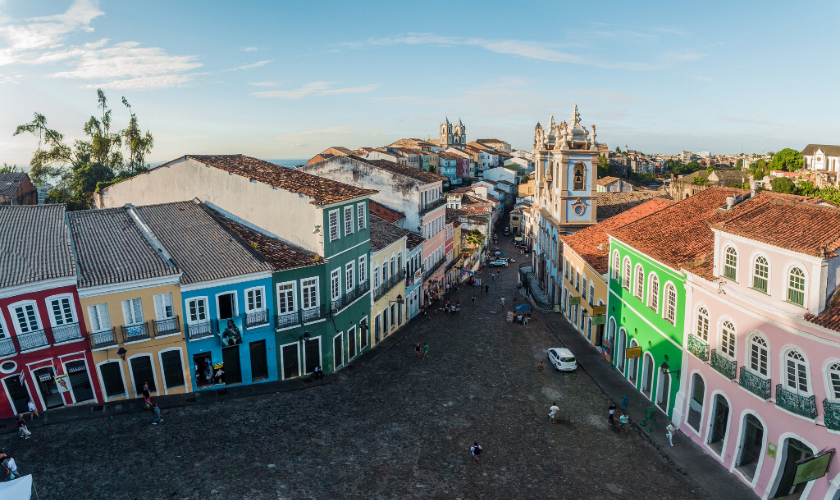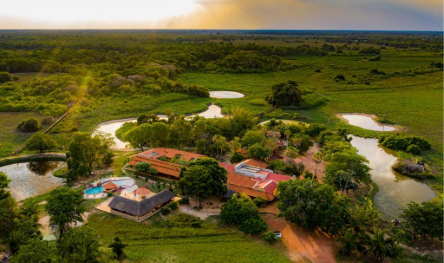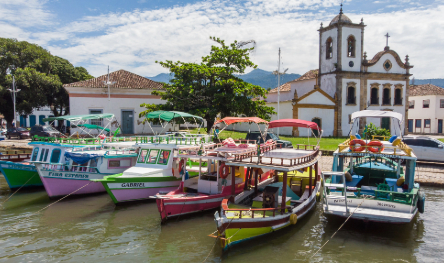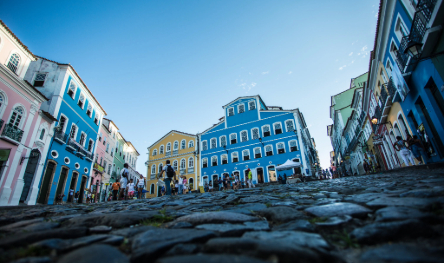Discover the historical heart of Salvador with this walking tour itinerary through Pelourinho, a neighborhood rich in culture, colonial architecture, and Afro-Brazilian traditions. This walking tour of Pelourinho is the perfect way to immerse yourself in the essence of Brazil's first capital.
Why Explore Pelourinho on Foot?
- Cultural Immersion: Feel the vibe of the historic streets up close
- Flexibility: Explore at your own pace, stopping wherever and whenever you want
- Economy: A free way to see major tourist spots
- Authenticity: Interact with locals and discover places off the tourist circuit
Suggested Itinerary
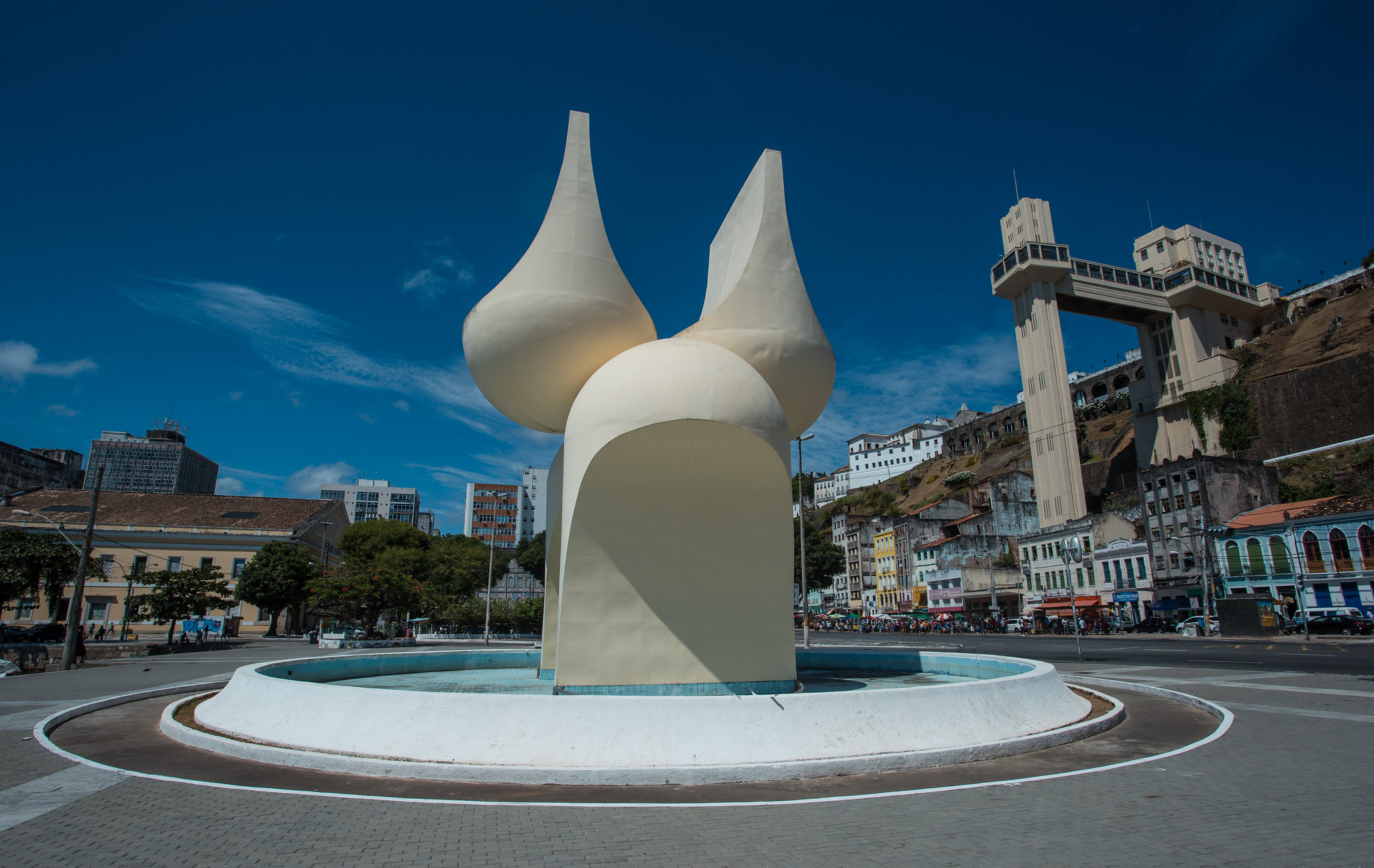
Picture: Marcio Filho / MTur
Praça da SéStarting Point: Beginning of the historical center
Highlight: Statue of Zumbi dos Palmares
Catedral Basílica de Salvador
Style: 17th-century Jesuit architecture
Tip: Look at the gold details inside
Largo do Pelourinho
Historical Significance: Center of the slave trade in the past
Today: Stage for cultural performances
Igreja de Nossa Senhora do Rosário dos Pretos
Importance: Built by and for African slaves
Highlight: Afro Mass on Sundays
Fundação Casa de Jorge Amado
What it is: Museum dedicated to the famous Bahian writer
Tip: Visit the souvenir shop on the ground floor
Largo do Cruzeiro de São Francisco
Attraction: Church and Convent of São Francisco
Highlight: Interior richly decorated with gold
Museu da Cidade
Location: Former City Hall
Exhibitions: History of Salvador and Bahia
Praça Terreiro de Jesus
Points of Interest:
- Cathedral of Salvador
- Former Faculty of Medicine
Tip: Great place to rest and watch the bustle
Tips for the Tour
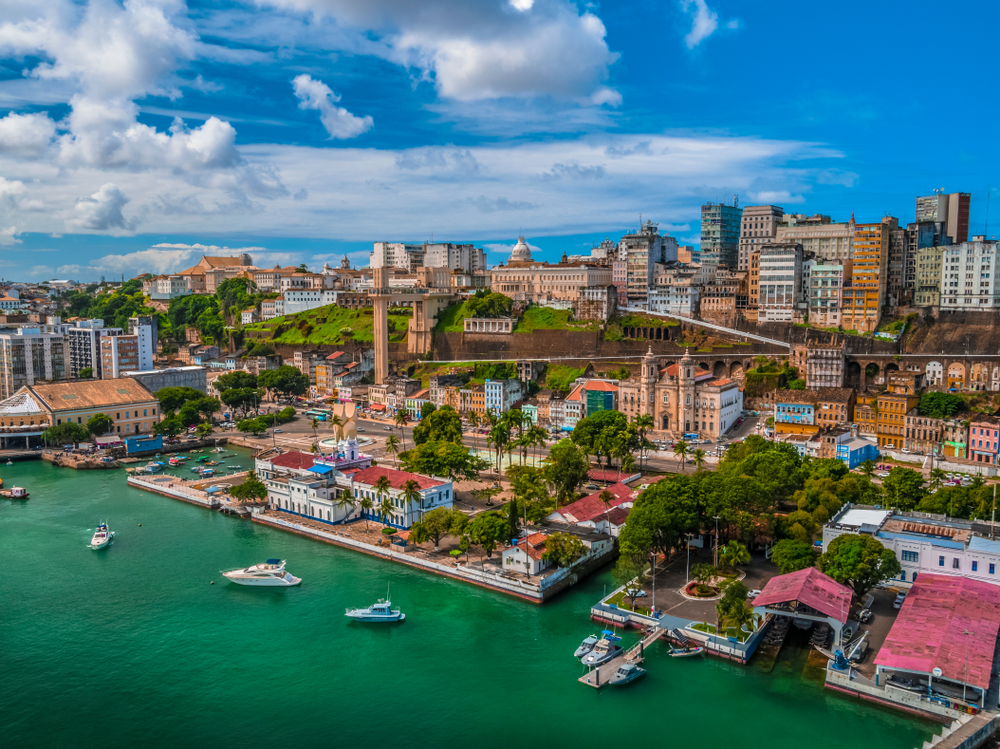
Picture: Peu Ribeiro / Shuttertock.com
- Comfortable Footwear: Pelourinho has many hills and cobblestone streets.
- Sun Protection: Use a hat and sunscreen, even on cloudy days.
- Hydration: Carry water, as the heat can be intense.
- Safety: Keep your belongings secure and stay alert in busier areas.
- Local Guide: Consider hiring a guide for deeper insights into the local history.
Best Time to Visit
- Year-Round Climate: The weather in Salvador is pleasant throughout the year.
- Carnival: A unique experience, but very crowded.
- Tuesday: Traditional day for cultural performances in Pelourinho.
Where to Eat During the Tour
- Restaurante do SENAC: Experience traditional Bahian cuisine with a panoramic view. This restaurant is known for its buffet featuring a wide range of local dishes.
- Cravinho: Famous for its artisanal liqueur, Cravinho is a must-visit for those looking to try unique local beverages in a vibrant setting.
- Sorveteria da Ribeira: Enjoy ice creams with typical Bahian flavors. It's the perfect spot to cool down with a sweet treat while exploring the area.
Cultural Events
- Terça da Bênção: Enjoy free musical performances every Tuesday, adding rhythm and vibrancy to the streets of Pelourinho.
- Balé Folclórico da Bahia: Experience captivating shows featuring Afro-Brazilian dance, showcasing the rich cultural heritage of Bahia.
- Olodum Rehearsals: Witness the rehearsals of the famous percussion group Olodum in the streets of Pelourinho, known for their energetic and powerful performances.
Exploring Pelourinho on foot offers a rich and authentic experience of Bahian culture. Every corner tells a story, and each square is alive with art and music. Prepare for an unforgettable journey through the historic heart of Salvador!
Additional Points of Interest
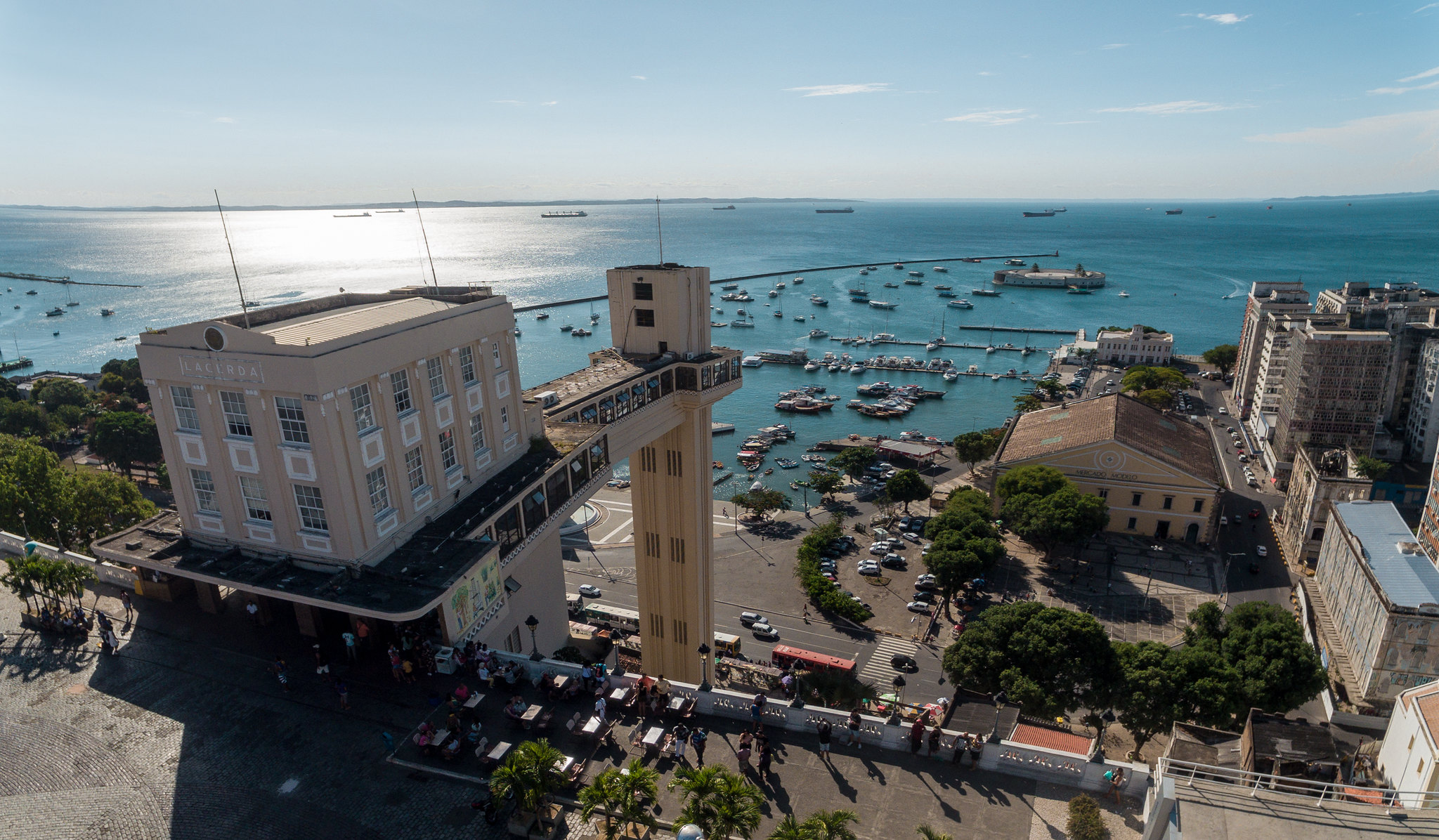
Picture: Marcio Filho / MTur
Casa do Carnaval da Bahia
What it is: An interactive museum dedicated to the history of the Bahian Carnival. This museum provides an immersive experience into the cultural significance and evolution of one of the most iconic celebrations in Brazil
Highlights:
- Costume Exhibits: View the vibrant and elaborate costumes that capture the essence and creativity of the Carnival.
- Musical Instruments: Explore a collection of traditional instruments used during the festivities, integral to the rhythmic heartbeat of Carnival music.
Tip: Take the opportunity to play some typical instruments. This interactive experience allows visitors to connect with the music and feel the energy of the Carnival.
Elevador Lacerda
Importance: Serving as an iconic symbol of Salvador, the Elevador Lacerda connects the Cidade Alta (Upper City) to the Cidade Baixa (Lower City). It is an essential part of the city's daily life and infrastructure.
View: Offers a breathtaking panoramic view of the Baía de Todos os Santos (All Saints Bay), allowing visitors to appreciate the stunning natural beauty and architectural layout of Salvador.
Curiosity: Known as the world's first urban elevator, it represents a remarkable feat of engineering from its time, highlighting Salvador's historical commitment to innovation and connectivity.
Mercado Modelo
Location: Situated near the Elevador Lacerda in the Cidade Baixa (Lower City), making it easily accessible for those exploring Salvador's historical areas.
What to Find: The market is a treasure trove of local crafts, souvenirs, and spices. It's an excellent place to purchase unique handmade items and experience the vibrant local commerce.
Gastronomic Tip: Be sure to try acarajé from the food stalls around the market. This traditional Bahian dish is a savory fritter made from black-eyed peas and is iconic in local cuisine.
Cultural Aspects of Pelourinho
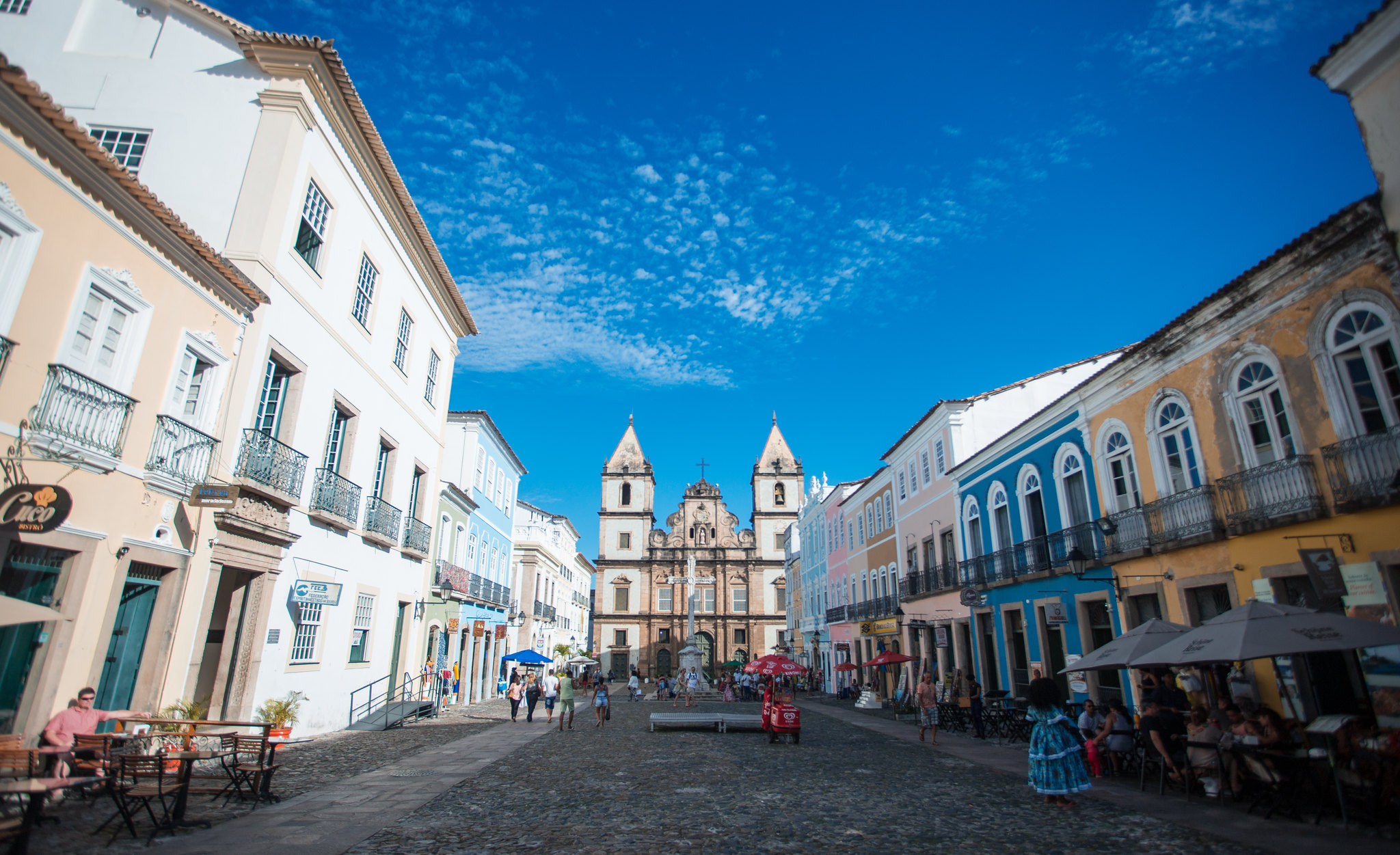
Picture: Marcio Filho / MTur
Colonial Architecture in Pelourinho
Observing the Colorful Mansions and Wrought Iron Balconies
Notice the Portuguese Tiles Decorating Many Facades
African Influence
Notable in Music, Cuisine, and Religious Traditions
Visit Candomblé Terreiros (With Respect and Permission)
Street Art
Murals and Graffiti Tell Stories of Local Culture
Street Performers Frequently Perform in the Squares
Additional Tips for Visiting Pelourinho
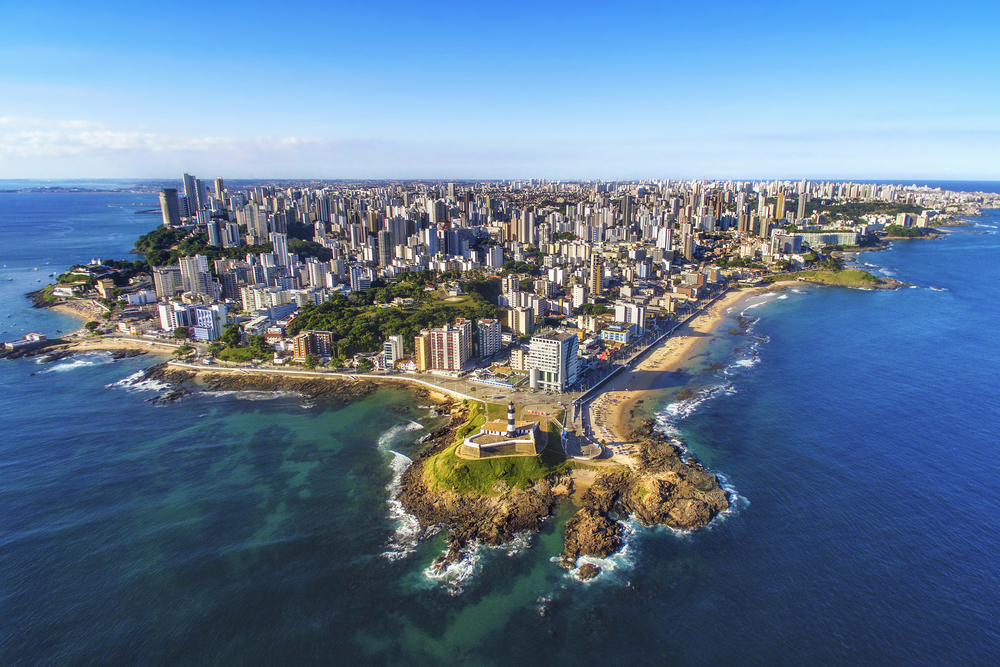
Picture: R.M. Nunes / Shutterstock.com
Photography
Best Lighting for Photos: Early Morning or Late Afternoon
Ask for Permission Before Photographing People or Religious Ceremonies
Shopping
Bargaining is Common, Especially in Craft Markets
Typical Products: Senhor do Bonfim Ribbons, Berimbaus, and Naïve Art
Local Interaction in Pelourinho
Learn Some Bahianês Words to Connect with Locals
Participate in Capoeira Rodas
Historical Curiosities of Pelourinho
- The name "Pelourinho" indeed has a somber historical significance. It comes from the Portuguese word for "pillory," which refers to a stone column used for public punishment during the colonial era.
- Pelourinho, located in the heart of Salvador, Bahia, was declared a UNESCO World Heritage Site in 1985. This designation underscores the historical and cultural significance of the area.
- In the 1990s, Pelourinho underwent a significant revitalization process that transformed the neighborhood from a neglected area into a thriving cultural and tourist destination.
Typical Cuisine to Try in Pelourinho
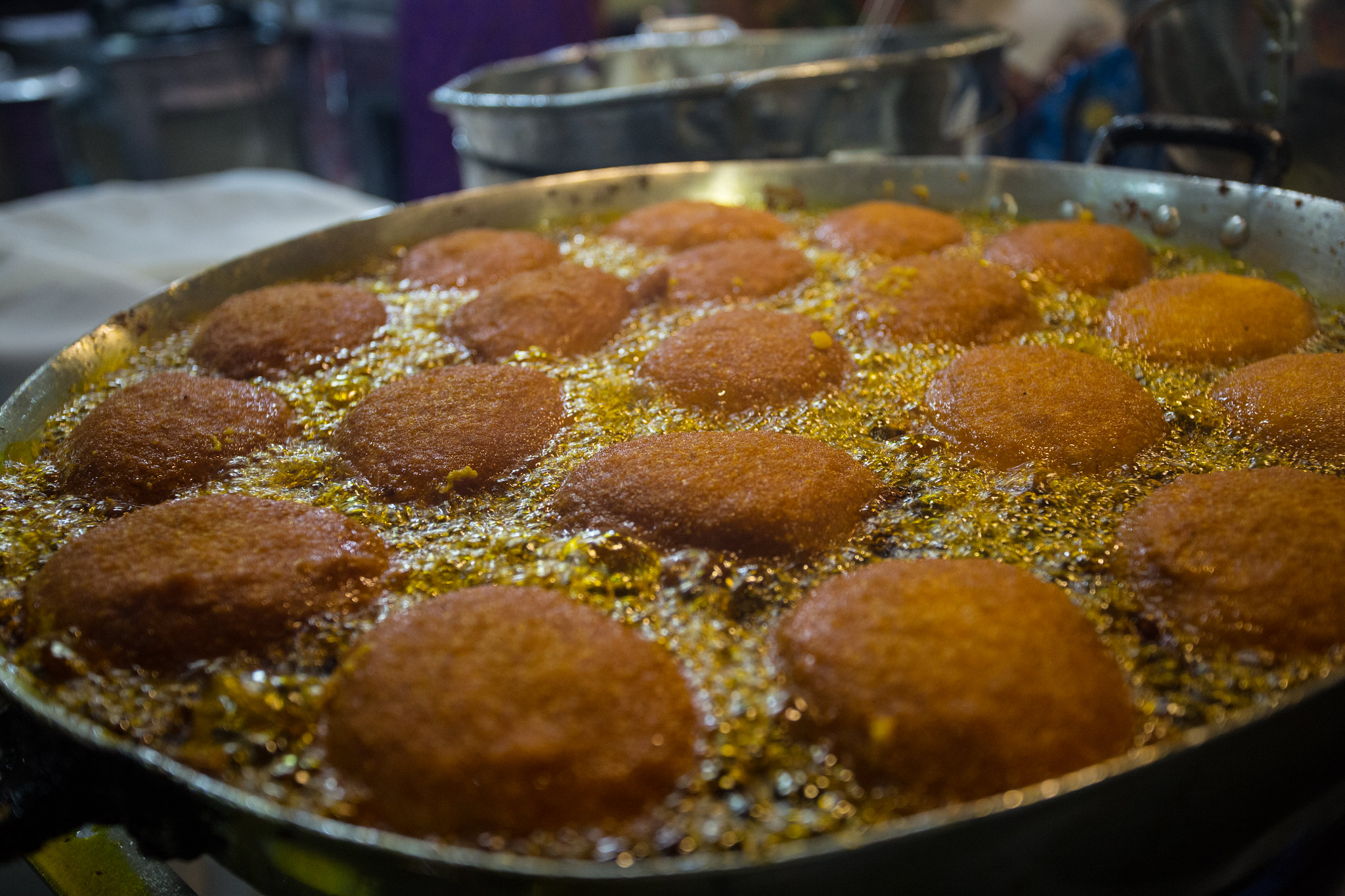
Picture: Marcio Filho / MTur
- Acarajé is a quintessential dish of Bahian cuisine, deeply rooted in the Afro-Brazilian culinary tradition.
- Moqueca is a traditional Brazilian dish that hails from Bahia, known for its rich and aromatic flavors. This seafood stew is a must-try for anyone exploring Bahian cuisine.
- Vatapá is a delicious and creamy dish that's central to Bahian cuisine, known for its rich texture and complex flavors. It is often enjoyed as a standalone dish or as a filling in acarajé.
- Cocada is a traditional Brazilian confection that celebrates the tropical flavors of coconut. It's a beloved sweet across Brazil, particularly in Bahia, where it holds a significant place in local culinary traditions.
Safety Tips for Visiting Pelourinho
- When planning your visit to Pelourinho, it's advisable to explore the area during the daytime, especially if it's your first time.
- When visiting busy tourist destinations like Pelourinho, it's important to keep your belongings secure.
- When traveling, especially in bustling areas like Pelourinho, it's important to handle your money wisely to ensure both convenience and security.
- When exploring Pelourinho, being cautious while crossing streets is essential due to the often unpredictable traffic.
Conclusion
Exploring Pelourinho on foot is more than just a tourist stroll; it's a journey through the history, culture, and soul of Salvador. Each cobblestone street tells a story, every square echoes with the rhythms of Bahia, and every corner offers a new discovery.
As you walk through these historic streets, you will not only see the sights but feel the heartbeat of Brazil's first capital. Pelourinho is a place where past and present converge, where centuries-old traditions coexist with vibrant contemporary culture.
Allow yourself to get lost in the alleys, chat with the locals, taste the unique cuisine, and let yourself be enveloped by the contagious energy of this one-of-a-kind place. Walking through Pelourinho is not just a stroll; it's an experience that will be etched in your memory, filled with colors, flavors, and rhythms that only Bahia can offer.
Remember to respect the local culture, appreciate the diversity, and stay open to the surprises that Pelourinho surely holds. Each visit is unique, and every walk can reveal a new hidden treasure in this fascinating historical labyrinth.
Have a great walk and savor every moment of this incredible journey through the heart of Bahia!

